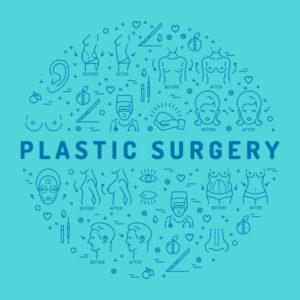The Latest Trends in Plastic Surgery
Like anything else, plastic surgery moves in trends. Certain procedures will be more popular than others at different times, more people will opt for non-surgical instead of surgical options and vice versa, etc. We can learn a lot about our world by examining plastic surgery statistics and how they change over time. The American Society for Aesthetic Plastic Surgery recently released their comprehensive statistics for 2017 and there are several interesting points that give us insight into modern cosmetic surgery.
Of the six surgeries that increased the most in 2017, four of them treat facial aging.
Eyelid surgery, facelifts, facial fat transfer, and neck lifts each increased by more than 20% between 2016 and 2017. This tells us a few things. First, it tells us that looking younger is an increasingly high priority for patients. And second, it demonstrates how many different ways there are to help patients look younger. Every person ages at their own speed and in their own way, so there’s a wide range of cosmetic treatments and surgeries available to address each person’s individual needs. Keep in mind that for these statistics, the category of “facelifts” also includes minimally invasive surgeries similar to my Band Aid Mini Facelift, so it’s likely that these less invasive surgeries have increased as well.
Fractionated laser skin resurfacing nearly doubled in 2017 – the highest increase of any treatment.
This extremely versatile type of treatment, which includes my Band Aid Laser Skin Resurfacing, uses tiny columns of laser light to help your body remove damaged surface skin and rebuild skin-firming collagen, all with much less recovery time than traditional laser skin resurfacing. The procedure can treat fine lines, wrinkles, age spots, acne scars or other scars, mildly sagging skin, and overall texture which can produce natural-looking results.
More men are taking advantage of non-surgical treatments.
In 2016, 8.9% of the country’s non-surgical cosmetic treatments (like laser treatments, Botox® injections, facial filler injections, etc.) were performed on men. In 2017, this increased to 9.2%. While it isn’t a huge jump, it’s still a marker of a growing trend. This is consistent with what I see in my own practice – men want to keep their procedures discrete so they tend to choose minimally invasive or non-surgical options that will leave them with less recovery time and less (if any) scarring.
Both surgical and non-surgical procedures are increasingly common among people over 65.
In 2017, 9.1% of cosmetic surgeries and 12.6% of non-surgical cosmetic treatments were performed for patients 65 and older – and both of these percentages were higher in 2017 than they were in 2016. While 35-50 is still the largest age group for cosmetic treatments, it’s encouraging to see patients of all ages taking control of their confidence.
As a plastic surgeon, I enjoy the opportunity to meet with each patient at their consultation and to get to know them and what their goals are. In the case of my Band Aid Mini Facelift and other in-office Band Aid plastic surgeries that let patients remain awake, I also get to become better acquainted with my patients throughout their procedure. Still, looking at larger trends like the ones above can also be a helpful way to learn about plastic surgery patients as a whole. To find out how you fit into this picture and discover what cosmetic treatments could do for you, schedule a consultation with me, Dr. John LeRoy. For more fun facts and helpful tips about plastic surgery, follow me on Facebook, Twitter, and Google+ as well.

